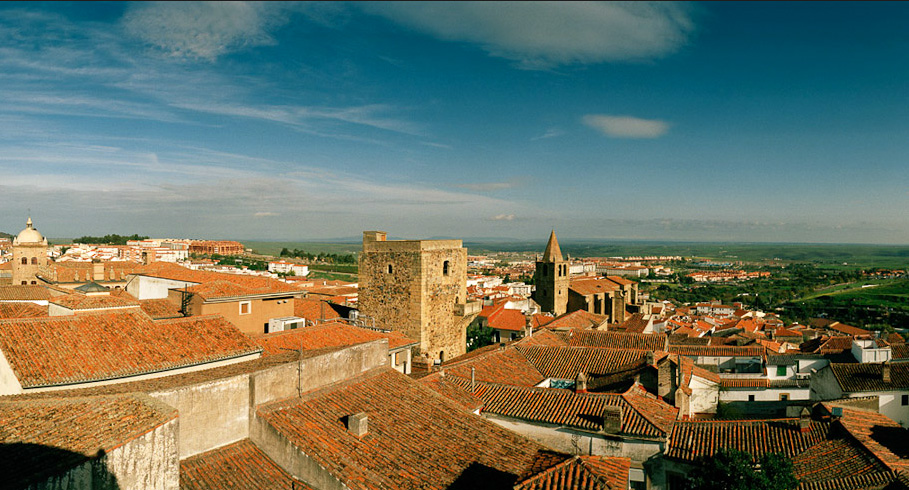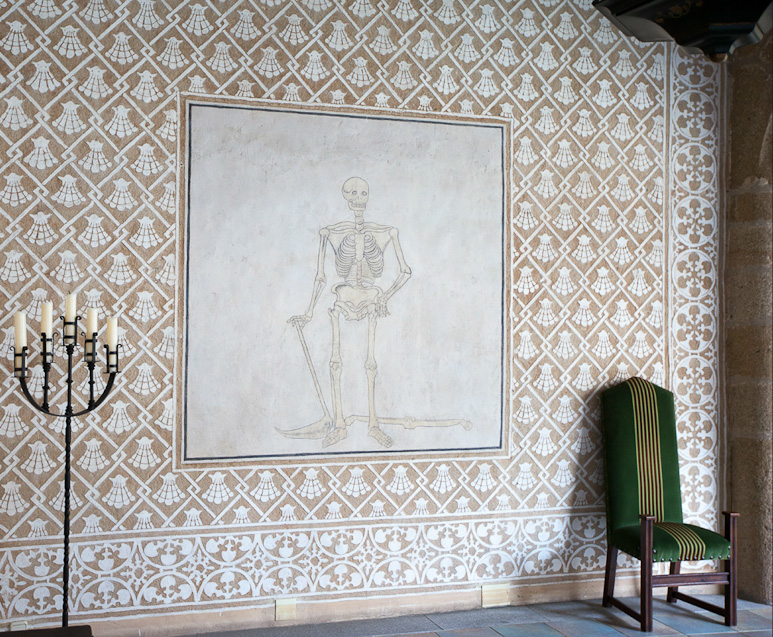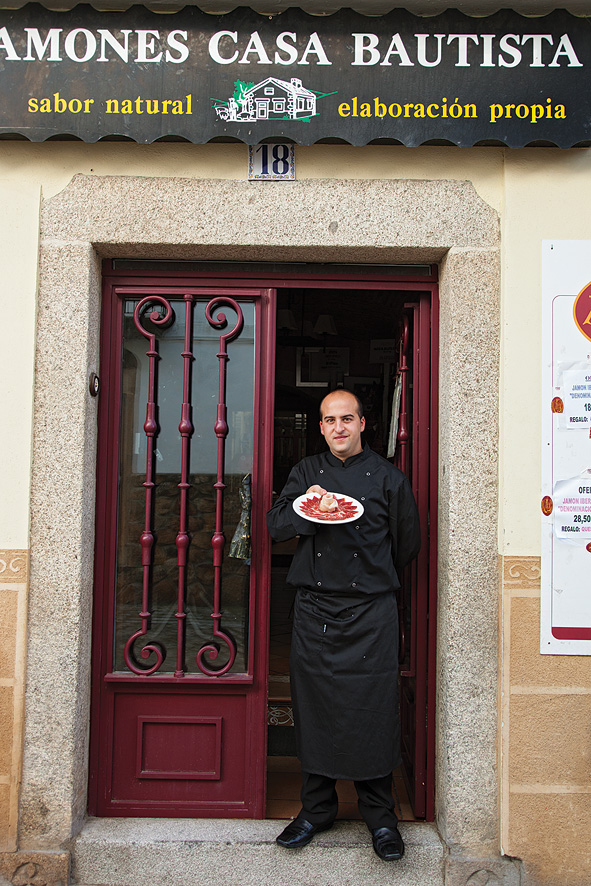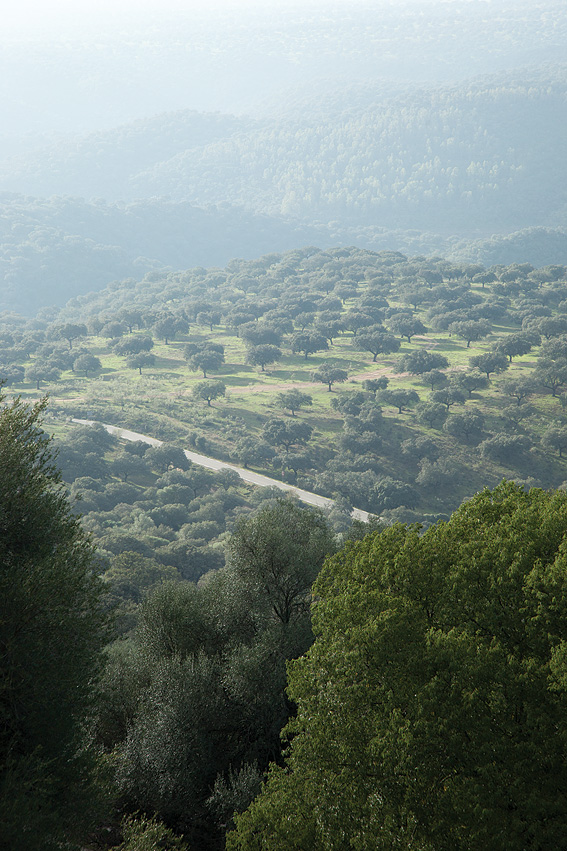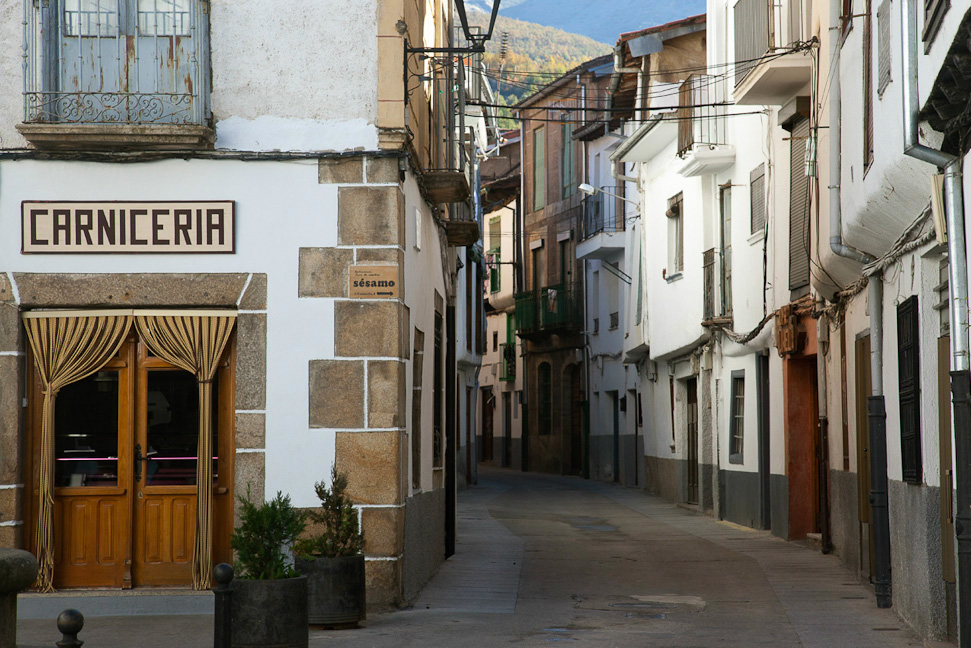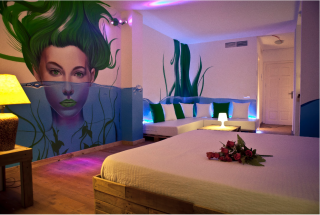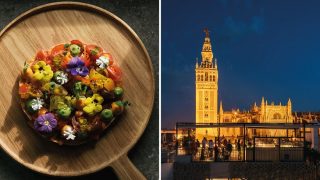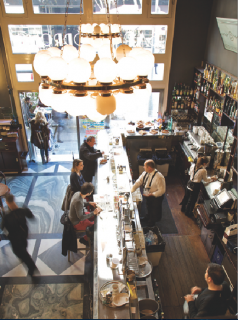Cloud-white storks nesting atop the Acueducto de los Milagros greet us as we enter Mérida. This is kilometer zero of the old Ruta de la Plata, and one of three aqueducts built by the Romans to supply water to the colony Emperor Augustus named Emerita Augusta in honor of his army veterans. Having withstood two major earthquakes, the aqueduct’s elegant engineering and graceful design create the perfect union of form and function.
Mérida is a crosshatch of the ages. In the middle of town, the ruins of the original Roman forum were occupied in the sixth century by Visigoths, before being appropriated 200 years later by the Moors. At the end of the 15th century Alonso Mexía, a Knight of the Order of Santiago, built a Renaissance-style palace over the remains, using materials plundered from the site’s Roman, Visigoth, and Moorish past.
Roman structures outside the city center fared better. The ruins of Mérida’s amphitheater, which dates from 15 B.C. and is notable for its elegant colonnade, were preserved by neglect. With the coming of Christianity, theatrical performances were deemed immoral and the theater and hippodrome (one of the largest in the Roman world) were abandoned, and the site became a dumping ground. The Roman structures remained undisturbed for centuries beneath a growing pile of detritus. The reconstruction of the amphitheater began in 1910, and continued through the 20th century. Today, events such as the annual Mérida Classical Theatre Festival make excellent use of this timeless performance space.
I’m also struck by the work of contemporary Spanish architects Rafael Moneo and Santiago Calatrava, who have masterfully integrated ancient designs into modern times. Moneo’s Museo Nacional de Arte Romano, inaugurated in 1986, is a succession of red brick arches that recall both aqueduct and temple. I am a painter, and for years sculptures from antiquity have been my passion and my inspiration. As I enter beneath the museum’s lofty brick archways, the vaulted space transforms into a sanctuary for gods and goddesses, ivory-colored marble sculptures of Venus, Mithras, Cronos among them, illuminated only by skylights and their presence evokes a mood of serenity, wonder, and repose. Soaring walls display the gleaming tesserae of Roman floor mosaics, some 12 meters high, bringing a new perspective to this ancient artistry.
In 1992, Santiago Calatrava built a single arched line of silver across the Guadiana River: the Puente de Lusitania, a bridge for motor vehicles. Its counterpoint, the Puente Romano, constructed 2,000 years ago with 62 stone arches, spans the water just upriver, and ranks as the world’s longest surviving Roman bridge. This is the essence of Extremadura—honoring the past, pushing boundaries in the present: two parallel bridges spanning the ages in a single embrace.
THE DETAILS
Getting There
Thai Airways flies nonstop between Bangkok and Madrid four times a week. Once in the Spanish capital, rent a car and head southwest along the A-5 freeway; the 290km drive to Hervás, near Extremadura’s northern border, should take about three hours.
When to Go
As its name suggests, Extremadura’s climate runs to the extreme, with sweltering summers and frosty winters. The milder seasons are a better time to visit. In the spring, the region’s flora and fauna put on a spectacular show, while in the fall, the area is blanketed in a palette of autumn colors.
Where to Stay
A former manor house, El Jardín del Convento (22 Plaza del Convento; 34-927/481-161; doubles from US$90) in Hervás is now a charming seven-room inn. Another historical conversion is Plasencia’s atmospheric Hotel Palacio Carvajal Girón (Plaza de Ansano 1; 34-927/ 426-326; doubles from US$120) , a 16th-century former palace where 28 rooms and suites offset exposed stone walls with plush furnishings; the restaurant here is also worth seeking out.
The guest quarters at Hotel Casa Don Fernando (30 Plaza Mayor; 34-927/627-176; doubles from US$75) in Cáceres are quite modern by comparison, though the setting, right on the Old Town’s main square, will please any history buff.
Where to Eat
In Cáceres, be sure to try the dining room at Atrio Restaurante Hotel (Plaza de San Mateo 1; 34-927/242-928), where chef Toño Pérez’s two-Michelin-starred cuisine—think wild-thyme-roasted Iberian pork loin and Galician scallops in paprika sauce—is matched by a stellar wine list that Wine Spectator has ranked as one of the world’s best.
Seasonal produce also stars in the dishes at Restaurant El Almirez (19 Collado; 34-927/ 473-459; ) in Hervás, while the dining room at Plasencia’s 15th-century convent turned inn Parador de Plasencia (Plaza San Vicente Ferrer; 34-927/ 425-870), turns out regional specialties like honey-roasted lamb and pickled partridge.
What to Do
The annual Mérida Classical Theatre Festival presents performances, mainly in Greco-Latin, in the ruins of a Roman amphitheater that date back to 16 B.C. From the past to the future, cutting-edge art from emerging artists awaits at the Centro de Artes Visuales Fundación Helga de Alvear (34- 927/ 626-414) in Cáceres.
This article originally appeared in the December 2013/January 2014 print issue of DestinAsian magazine (“Spanish Secrets”)

